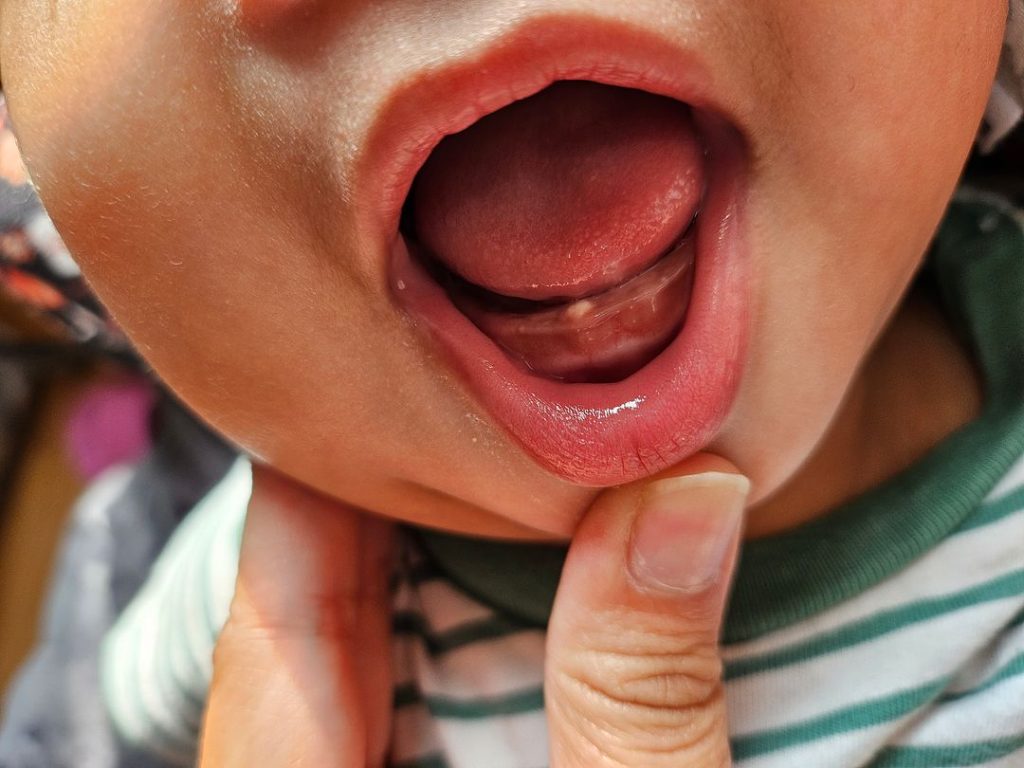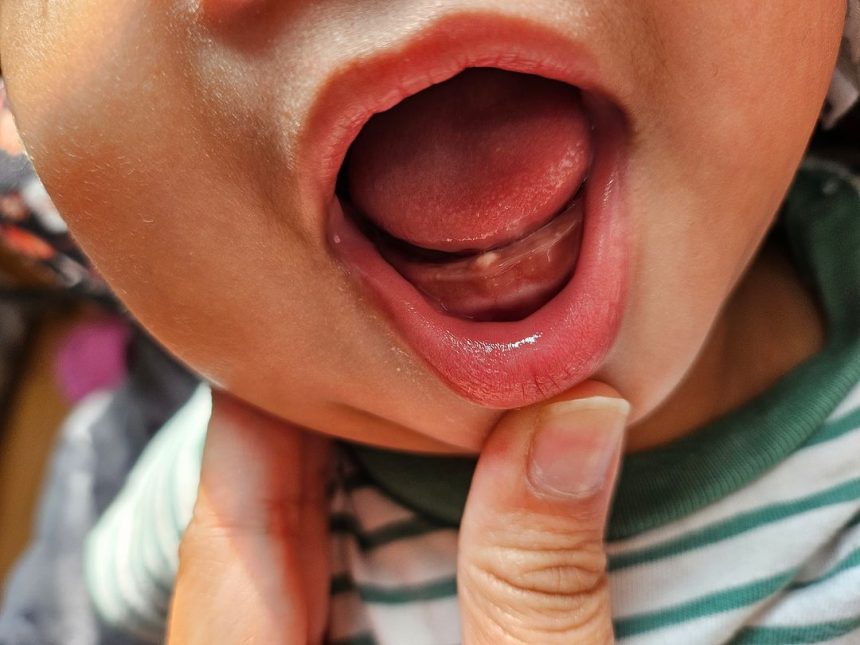Welcoming a new baby into the world is an exhilarating experience, filled with joyful milestones and precious moments. As parents, every little change in your baby’s development is bound to capture your attention, especially when it comes to their health and well-being. One common concern that many parents face is the appearance of white spots on their baby’s gums, particularly around the six-month mark when teething often begins. While it can be alarming to notice these unusual spots, it’s important to remember that they are not always a cause for concern.
In this article, we will explore the various causes of white spots on baby gums, provide tips for care, and offer reassurance to help you navigate this stage of your little one’s growth with confidence. Let’s dive into what you need to know to ensure your baby’s smile remains healthy and happy!
Understanding White Spots on Baby Gums and Their Common Causes

White spots on baby gums can be concerning for parents, but they are often harmless and can be attributed to several common causes. One frequent reason for the appearance of these spots is the developmental stage of teething. As your baby’s teeth begin to emerge, the gums may become irritated and display white patches, which can be mistaken for something more serious. This occurrence typically resolves itself as your baby’s teeth fully break through.
Another common source of white spots on gums is **oral thrush**, a fungal infection caused by an overgrowth of Candida yeast. Symptoms might include a cottage cheese-like appearance on the gums, tongue, and inner cheeks, accompanied by discomfort or fussiness. Parents should seek pediatric guidance if they suspect thrush, as antifungal treatments can effectively address this issue and restore your baby’s oral health.
In some cases, white spots can indicate **milia**, which are tiny, harmless cysts that can form on the gums and other areas of a baby’s mouth. These cysts are usually painless and will naturally resolve without any intervention. It’s essential to monitor these spots and consult with a pediatrician or dentist if there are any sudden changes or if your baby experiences discomfort. Regular oral hygiene practices, such as gently wiping your baby’s gums with a clean, damp cloth, can help maintain overall oral health and prevent potential issues.
Recognizing the Difference Between Normal Development and Warning Signs
When it comes to your baby’s oral health, it’s crucial to differentiate between what is typical and what might be alarming. At six months, babies are undergoing a significant period of development, which includes the emergence of their first teeth and changes in their gums. A white spot on the gums can be quite common, often associated with teething or the eruption of dental tissue. During this time, babies may also experience some discomfort, drooling, and fussiness, all of which are typical signs of this developmental milestone.
However, not all white spots are benign. Parents should be aware of specific warning signs that might indicate an underlying issue. Look for the following indicators that could suggest a more serious condition:
-
- Persistent or painful lesions: If the white spot is hard, raised, or causes your baby discomfort, it may require medical attention.
-
- Accompanying symptoms: Indicators such as fever, bad breath, or overall irritability could point towards an infection or other health concern.
-
- Changes in feeding behavior: If your baby is refusing to feed or shows signs of pain while eating, it may warrant a consultation with a pediatric dentist.
Understanding these differences is key in ensuring your baby’s health and development. Keeping a close eye on the changes in their oral cavity and maintaining regular dental check-ups will help you address any potential issues early on. If you have concerns about a white spot or any changes in your baby’s gums, it’s always best to consult with a healthcare professional for peace of mind and appropriate care.
Essential Care Tips for Maintaining Healthy Gums in Infants
Maintaining healthy gums is crucial for your infant’s overall oral health. Regular oral hygiene practices can help prevent issues like white spots on baby gums. Gently wipe your baby’s gums with a clean, damp cloth after each feeding to remove any milk residue and bacteria. This simple routine can foster a healthy environment for their future teeth and promotes good habits as they grow. Remember, even before teeth emerge, it’s vital to keep the gum area clean.
In addition to regular cleaning, **monitoring your baby’s diet** plays a key role in gum health. Limit sugary foods and drinks that can contribute to bacterial growth and plaque formation. Instead, focus on providing a balanced diet rich in essential nutrients. Consider the following healthy options for your baby:
-
- Soft fruits like bananas and avocados
-
- Vegetables such as steamed carrots or sweet potatoes
-
- Whole grains and baby cereal
It’s also important to schedule regular check-ups with a pediatric dentist. They can guide you through the stages of your infant’s oral development and identify any potential concerns early on. Use the following table to keep track of important dental milestones:
| Age | Milestone |
|---|---|
| 0-6 months | Gums should be wiped clean after feedings |
| 6-12 months | First tooth may emerge; continue cleaning gums |
| 1 year | Visit to the dentist recommended |
When to Consult Your Pediatrician About Baby Gum Concerns
Identifying a white spot on your baby’s gums can be concerning, and knowing when to consult a pediatrician is essential for your peace of mind. If the spot appears suddenly and is accompanied by any of the following symptoms, it’s advisable to seek medical attention:
-
- Persistent Irritation: If your baby seems unusually fussy or in discomfort, it might indicate that the white spot is causing pain.
-
- Swelling or Inflammation: Look for any signs of swelling around the spot, which could suggest an infection or other underlying issue.
-
- Difficulty Feeding: If your baby is unwilling to feed, it could be a sign that they are experiencing discomfort related to the gum issue.
Additionally, if the white spot persists for more than a week or changes in appearance, it’s crucial to consult your pediatrician. Conditions such as oral thrush or dental concerns can develop, and they require professional evaluation:
| Condition | Potential Symptoms |
|---|---|
| Oral Thrush | White patches, fussiness, feeding issues |
| Teething | Gum swelling, drooling, irritability |
| Cysts | Localized swelling, no pain, visible bumps |
if your baby shows signs of illness such as a fever or red spots elsewhere in the mouth, it’s best to reach out to your healthcare provider immediately. Early intervention can help prevent further complications and ensure the health and comfort of your little one:
-
- Fever: A rise in temperature could indicate an infection.
-
- Redness: Additional irritation around the gums may point to an infection.
-
- Behavior Changes: Any significant change in your baby’s behavior warrants a check-up.
Q&A
Q: What does it mean if my baby has a white spot on their gums at 6 months?
A: A white spot on your baby’s gums at six months can be quite common and is often a normal part of teething. However, it could also be a sign of other conditions such as oral thrush, a dental issue, or even an infection. It’s always a good idea to consult your pediatrician or a pediatric dentist for an accurate diagnosis.
Q: What are the common causes of white spots on baby gums?
A: The most common causes of white spots on baby gums include:
- Teething: As teeth begin to emerge, you may notice white spots where teeth are coming through.
- Oral Thrush: This is a fungal infection that can appear as white patches in the mouth and on the gums.
- Canker Sores: These can appear as small white or yellowish sores on the gums and are typically painful.
- Dental Issues: Sometimes, white spots may indicate dental problems such as decayed or developing teeth.
Q: How can I care for my baby’s white gums?
A: Care depends on the underlying cause. If it’s teething, you can soothe your baby with teethers or cold washcloths. For oral thrush, your doctor may recommend antifungal medication. Ensure regular oral hygiene by gently wiping your baby’s gums with a clean, damp cloth after feedings. Always check with your healthcare provider for the best course of action.
Q: When should I be concerned about a white spot on my baby’s gums?
A: You should consult a doctor if the white spot:
-
- Does not go away in a few days.
-
- Is accompanied by other symptoms such as fever, irritability, or difficulty feeding.
-
- Looks painful or seems to be bothering your baby.
-
- Appears to spread to other areas in the mouth.
Q: Are there any home remedies I can use to help soothe my baby’s sore gums?
A: Yes! Some effective home remedies include:
-
- Using a clean, cold washcloth or teething ring for your baby to chew on.
-
- Dab a little bit of chamomile tea on their gums (always check with your doctor first).
-
- Massaging the gums gently with a clean finger can also provide relief.
Q: Can diet affect the appearance of white spots on my baby’s gums?
A: While diet isn’t usually the primary cause of white spots, a high-sugar diet can contribute to oral thrush and cavities as your baby starts transitioning to solid foods. Ensure your baby has a balanced diet and limit sugary snacks to promote good oral health.
Q: How can I prevent white spots on my baby’s gums in the future?
A: To help prevent issues related to white spots:
-
- Practice good oral hygiene from an early age.
-
- Allow your baby to explore teething toys to soothe their gums.
-
- Schedule regular dental check-ups as soon as the first tooth appears.
-
- Maintain a balanced diet for your baby and avoid excessive sugar.
By addressing concerns and taking proper care, you can ensure that your baby’s oral health remains a priority, paving the way for a lifetime of healthy smiles!
The Way Forward
noticing white spots on your baby’s gums at six months can be concerning, but understanding the possible causes and appropriate care can help ease your worries. From natural developmental changes to potential signs of teething, most instances are harmless and part of your little one’s growth journey. If you’re ever uncertain or if the spots persist, consulting your pediatrician is an excellent step toward ensuring your baby’s health. Remember, you’re not alone in this parenting adventure—stay informed, keep a close eye on your baby’s dental health, and don’t hesitate to reach out for professional advice when needed. Your baby’s smile is worth it!


